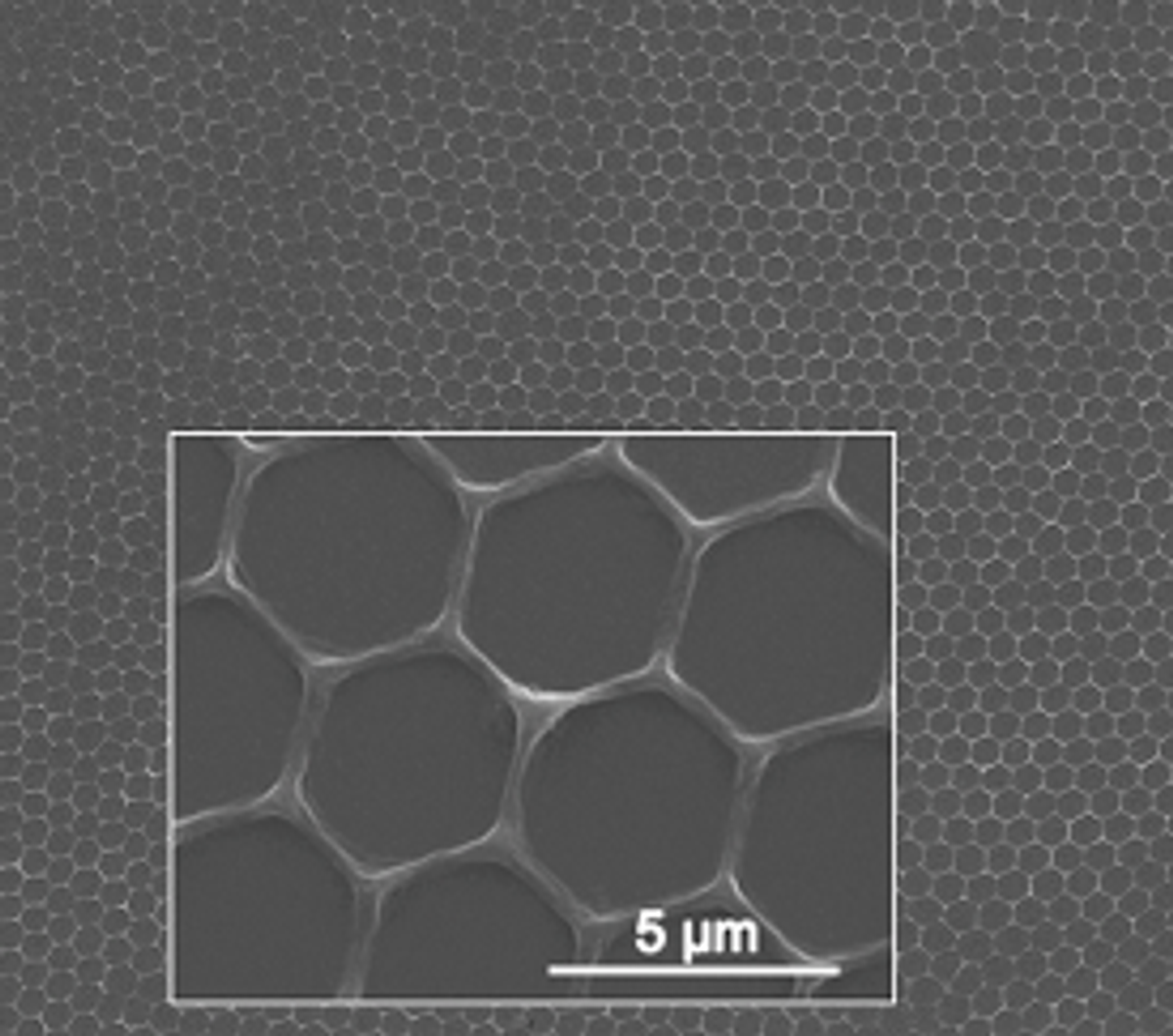From a press release: "Under carefully controlled conditions, the material self-assembles to form a reproducible pattern of micron-size hexagon-shaped cells over a relatively large area (up to several millimeters)."
The researchers noted that hexagonal transparent cells have been created before using other polymers, but never with the semiconductor-fullerene combination. By repeating the millimeter-scale patterning over a wider area, one of the researchers said the thin film could be used to create "energy-generating solar windows, transparent solar panels, and new kinds of optical displays."
The hexagons tend to let light through their centers and absorb it better at the edges, keeping an array of them largely transparent. And the edges also seem capable of conducting electricity.
Even the fabrication process seems predisposed to scale up toward commercial uses. Micrometer-scale water droplets were spread over a thin layer of the polymer-fullerenes combo, and the water then assembled itself into larger arrays. When it evaporated, the hexagonal structure of the arrays was left behind. The paper on the new technique and material was published in the journal Chemistry of Materials.
The list of solar cell innovations continues to grow, but most are slow to scale up toward actual market use. Still, it doesn't get any less exciting to picture the windows of one's house actually powering what's behind them.
(Image via Brookhaven National Laboratory)
Dave Levitan is the science writer for FactCheck.org, where he investigates the false and misleading claims about science that U.S. politicians occasionally make.




